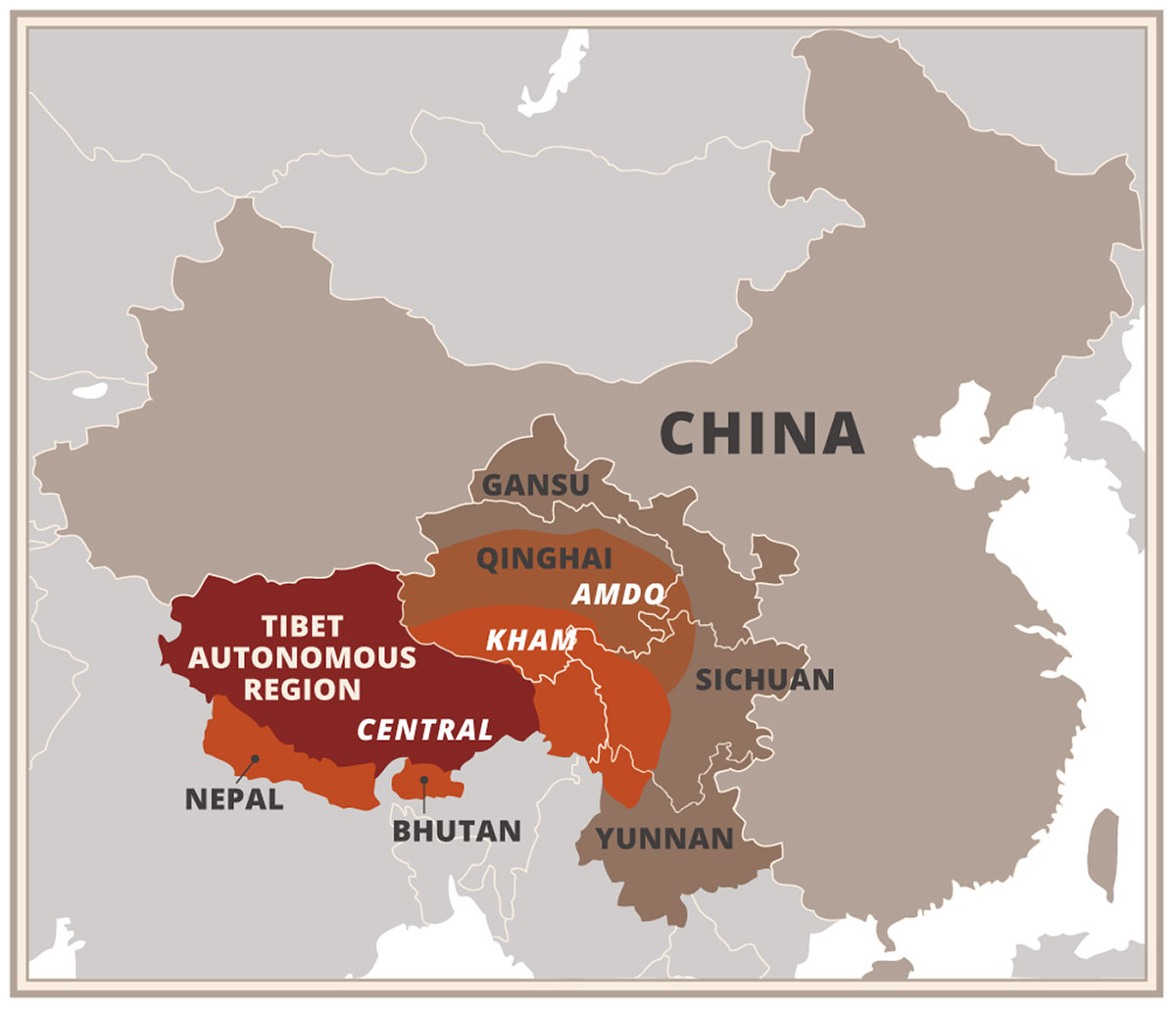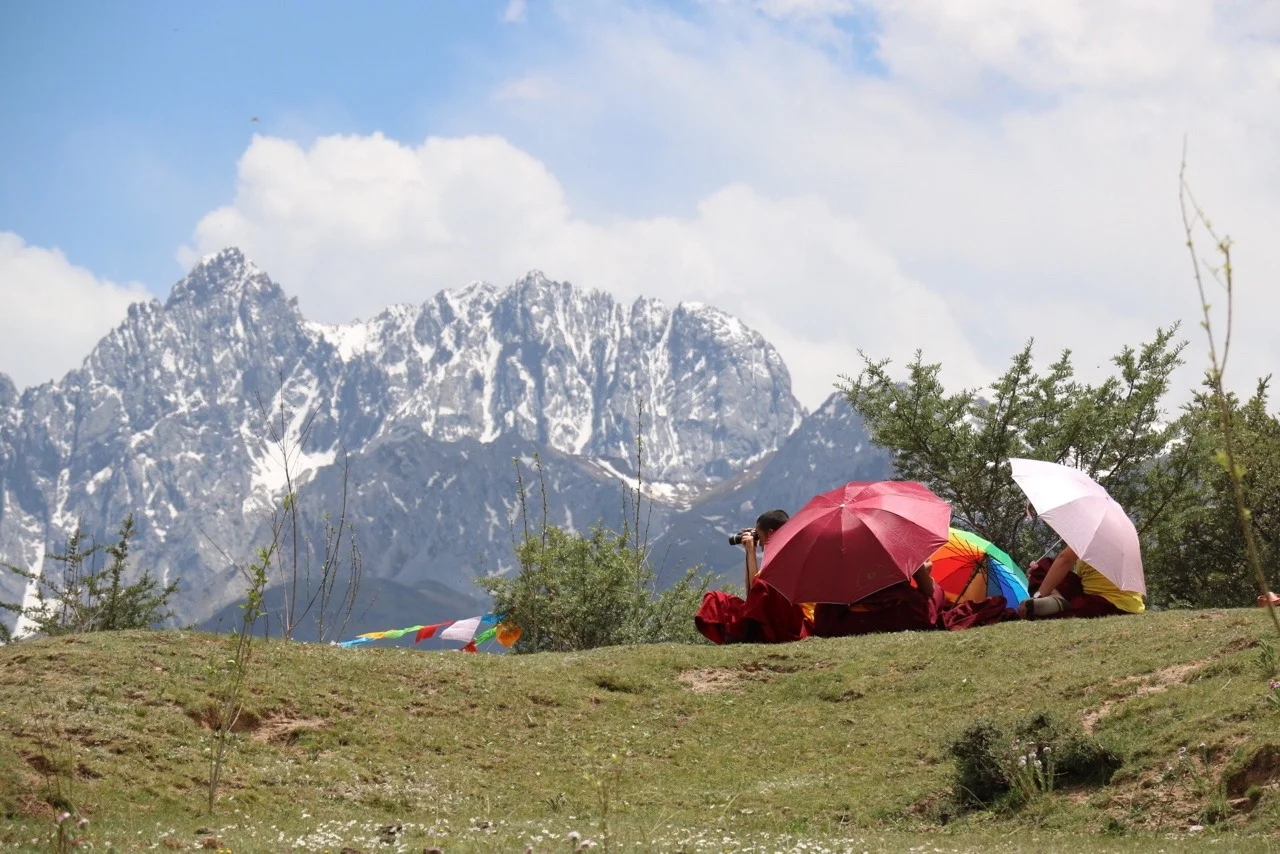Bhutan is a country steeped in traditions and ancient practices, which are all put on show for the annual Paro Tsechu, the biggest festival in the Kingdom of the Thunder Dragon.
Hundreds of people gather in the cool mountain air at Paro Dzong, the ancient fortress-cum-monastery that is the centre of religious life in the small town. The historic building, officially called Rinchen Pung Dzong and built in 1644, is reputedly one of the country’s best examples of Bhutanese architecture, featuring robust walls and intricate designs.
Men, women and children come from all over the countryside dressed in their finest clothes for this event – men in their gho and women in their kira. Many Bhutanese people wear traditional clothing every day for work and social activities, but the festival is a great chance to show off new or special items.
The trumpets begin to drone and cymbals clash as the performances begin – monks dressed in elaborate brocade costumes take centre stage and begin their stylized dances. They pace, each step deliberate and carefully placed, raise their arms and flick their wrists, and leap into the air like athletes. Their dances are symbolic retellings of Tibetan Buddhist mythology or particular teachings, but to the uninitiated they make a colourful and mysterious spectacle.
Throughout the day several different dances are performed, each one with unique costumes and masks to indicate which demons or spirits the monks are portraying. The monks spend months preparing themselves for the performance, and don’t disappoint their audience who watch enraptured, certain that just by being in the crowd they are gaining spiritual merit.
A highlight of the festival for the pilgrims and spectators is the arrival of Guru Rinpoche (Padmasambhava), embodied by a costumed monk. Guru Rinpoche was a saint, or a second Buddha according to some believers, who is credited with firmly securing Buddhism’s place on the roof of the world in Tibet. The unique Tibetan form of Buddhism was also spread to Bhutan by Guru Rinpoche when he flew to the country on the back of a tiger and landed at the now famous Tiger’s Nest Monastery just outside Paro.
Finally, at dawn on the final day of the festival an enormous thangka (woven image depicting religious figures) is unveiled, completely covering the side of a building. The pious line up to make offerings or receive a blessing from the thangka, many believing that even just to see it ensures liberation from suffering. After a few short hours the thangka is once again carefully covered and stored inside the monastery building for another year until the next Paro Tsechu.
Paro town is like the cover of a chocolate box – its streets are full of colourfully painted wooden shop fronts, reminiscent of an Austrian or Swiss mountain village. Never colonised, Bhutan remained totally isolated until the mid-1970s, when its border slowly creaked open and tourists began trickling in. Strict regulations for tourism has ensured that the country retains its charm and quaint atmosphere even through the introduction of sealed roads, cars, telephones, and electricity in the 1960s.
The present-day government encourages tourism, but requires all visitors to join a tour company. It levies a tourist tax of US$65 (NZ$90) a day to help provide free education and healthcare for the entire population. Tourist numbers remain modest, with fewer than 23,000 visiting in the first half of 2016, which pales in comparison to Thailand’s whopping 16.5 million tourists for the same period.
Even at Paro Tsechu, an event that draws crowds from far and near for this once-a-year event, tourists are in the minority and can experience being totally immersed in the Bhutanese culture.
The Paro Festival is held annually in March or April. Find out more about travelling to Bhutan during Paro Tscechu.















































